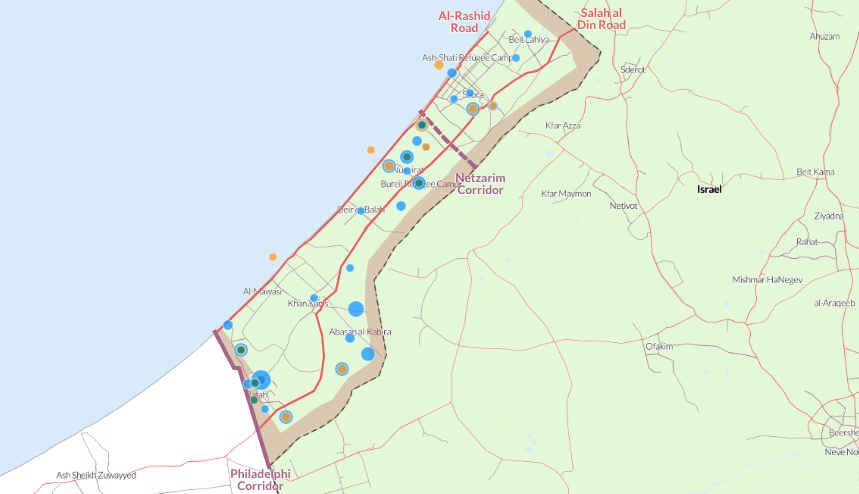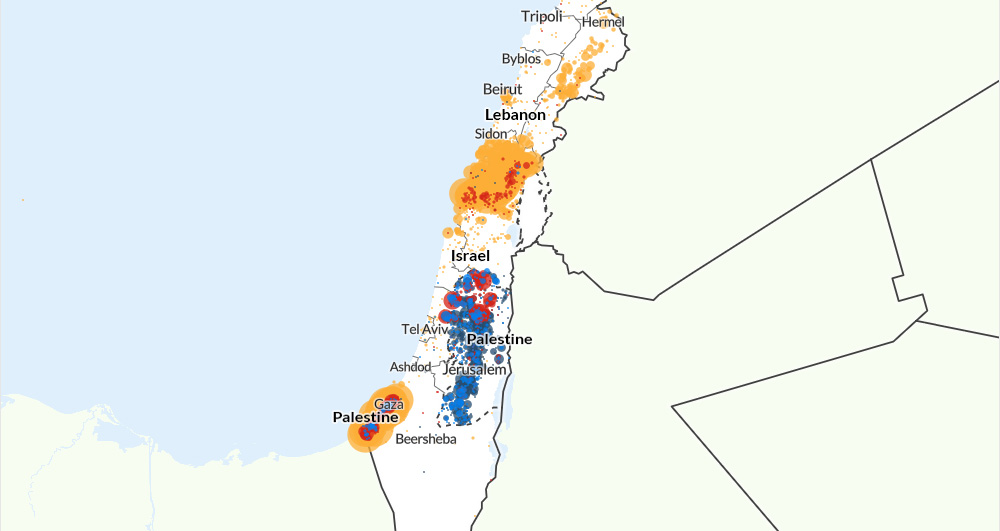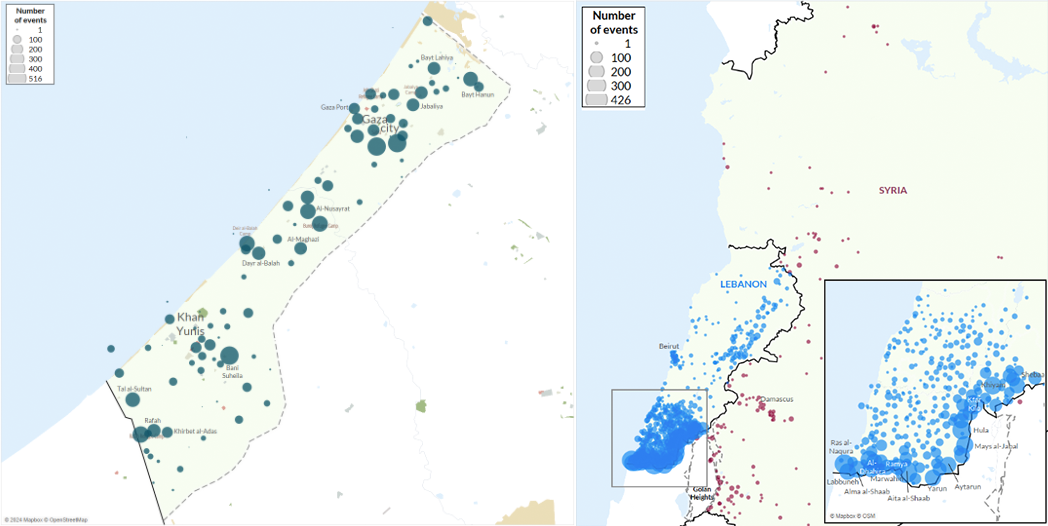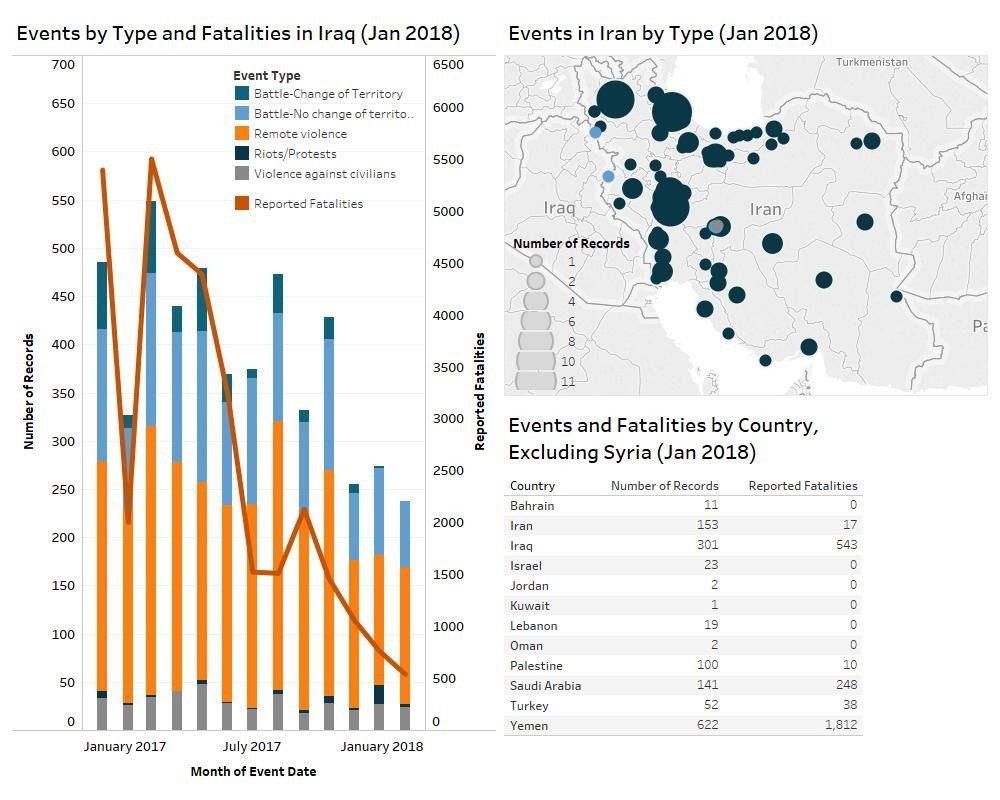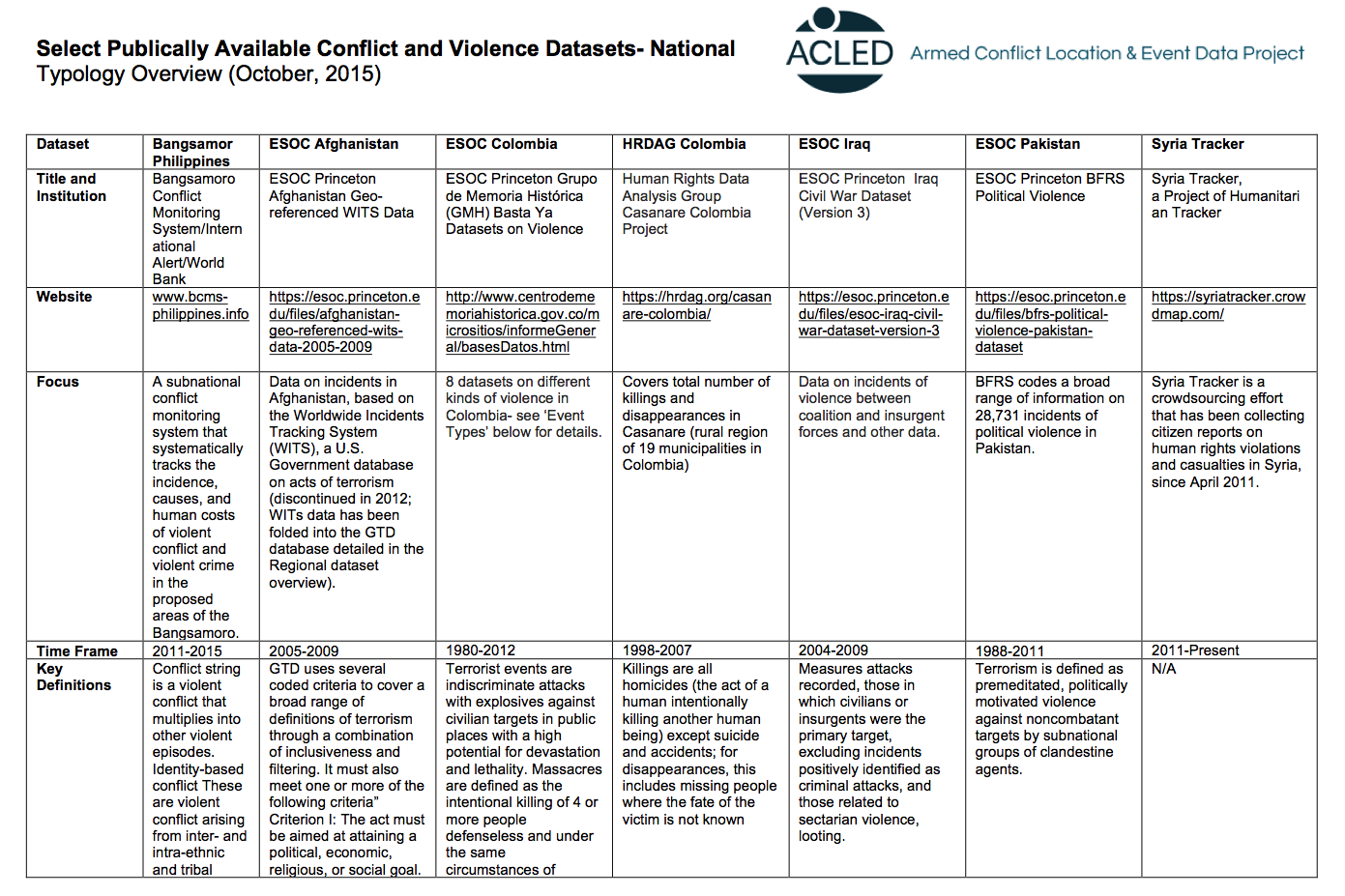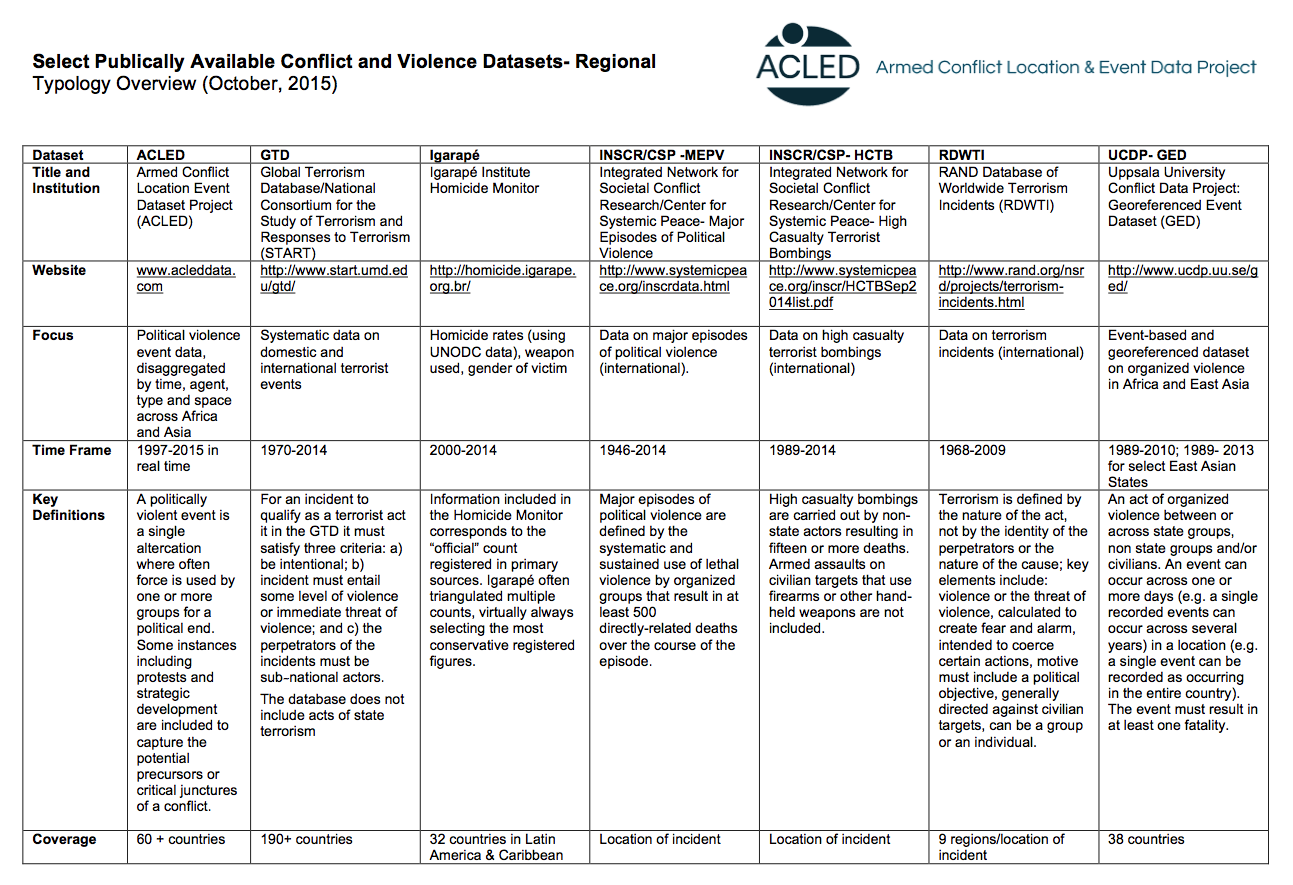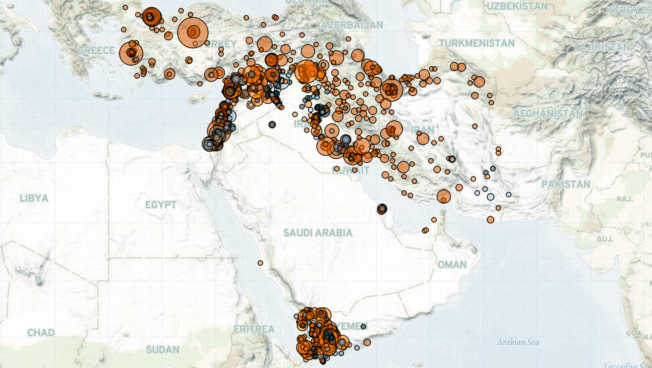Israel &
Check this hub page for the latest ACLED data and analysis on Israel and Palestine.
For resources on the wider region, see our Middle East Regional Hub. The Middle East dataset is updated every Monday through the most recent Friday.
Gaza Monitor
ACLED’s Gaza Monitor maps political violence and property destruction events in Gaza, as well as attacks originating in Gaza targeting Israel, since the current conflict began on 7 October 2023.
Curated Data
This file contains all political violence events, demonstration events, and strategic developments recorded in Israel and Palestine from the beginning of ACLED coverage to the present.
Please note that historical coverage may vary by country. A full list of country-year coverage is available here.
For an explanation of how ACLED codes and categorizes data, see the ACLED Codebook. For more information, see our Resource Library. Guides specific to the Israel and Palestine include:
Israel-Palestine ( 18 April 2025 )
Featured Analysis
12 December 2024
Conflict Watchlist 2025
A year of multi-front conflict: Israeli military operations in Gaza, the West Bank, and Lebanon
While the IDF has managed to inflict substantial damage on Hamas and Hezbollah, the prospects for lasting peace remain bleak.
10 November 2024
One year of war in numbers
One year after the onset of the current crisis in the Middle East, following Hamas’ deadly attack on southern Israel on 7 October, Israeli Prime Minister Benjamin Netanyahu’s vow of “complete victory” and the “elimination” of Hamas as a threat to Israel remains unfulfilled.
Israel & Palestine Analysis
Regional Overview – Middle East 5 February 2018
9 February 2018
The first month of 2018 has seen significant developments in several countries across the Middle East. Excluding Syria, the region as a whole saw a drop in the number of…
Read MoreSelect Publicly Available Political Violence Datasets — National-Level
30 October 2015
ACLED has compiled a list of select publicly available political violence datasets offering data at the national-level. This table — found below — can also be downloaded here. For a list…
Read MoreSelect Publicly Available Political Violence Datasets — Regional-Level
21 September 2015
ACLED has compiled a list of select publicly available political violence datasets offering data at the regional-level. This table — found below — can also be downloaded here. For a list…
Read MoreRegional Overviews: Middle East
Our monthly analysis briefs break down the latest data on political violence and protest trends, highlighting potential early warning signs for closer monitoring.

